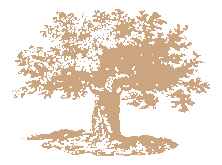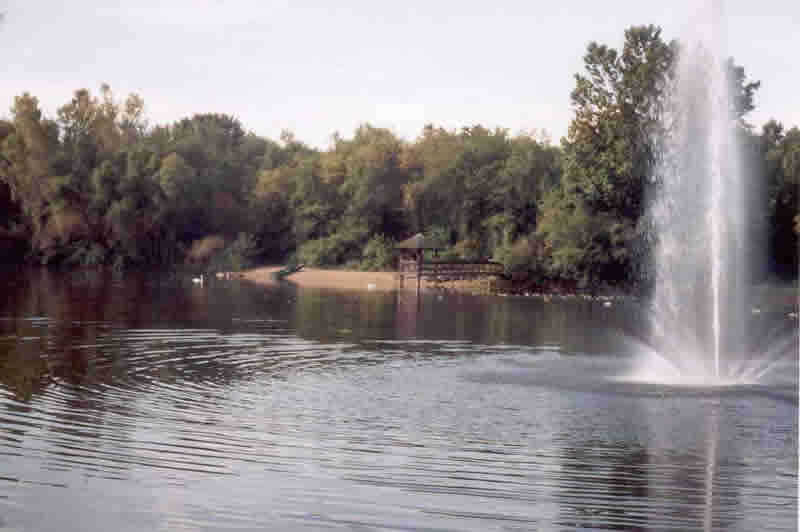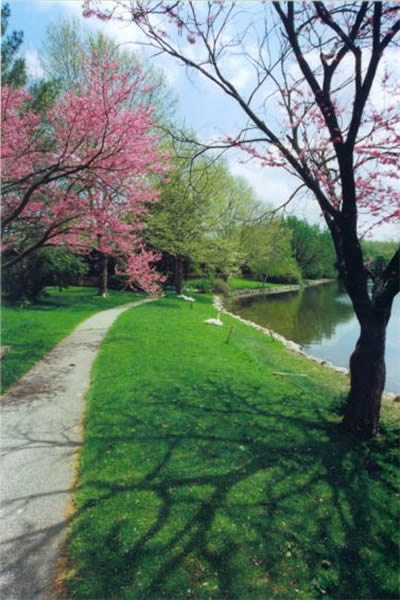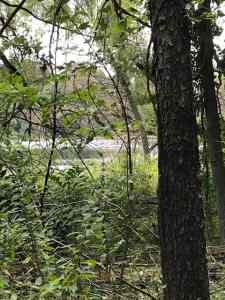Background
Parkview Hills Community Association was founded in 1971, near the beginning of the modern eco-village era in the United States, as a way to value and preserve the interaction of its community members with the natural environment, and “to give the strongest practical consideration of the preservation of the natural features” that makes this interaction possible. Our community resides, quite literally, at the intersection of human community and the natural environment.
The fields of nature ecology and conservation were young 48 years ago, and in the years since then, our understanding of environmental sciences and healthy natural management has grown exponentially. While a “hands-off”, “preserve as is”, “nature will heal itself” approach to nature was an appropriate response in the latter half of the 20 th century to the use and abuse of the environment since the 19 th century, the 21 st century reaps the challenges birthed by the consequences of this hands-off approach to caring for nature. Fortunately, modern science and ecology have evolved in the last five decades, and we can benefit from what we have learned.
Growing Challenges
Like the US as a whole, Parkview Hills is increasingly populated with people who interact less frequently with the natural environment in knowledgeable ways. Because natural changes are slow, they are almost imperceptible to an untrained eye. Dense, lush growth does not mean it is healthy growth. Because our definitions of natural environment and natural management are under-informed by modern environmental science and ecological methods, our approach has become neglectful. Our understanding and efforts need to evolve with science and ecology. Natural environments have an incredible ability to heal themselves with intelligent, nature-sensitive management. Without that attention, they also have the ability to deteriorate and degrade.
- Non-native ornamental and hybrid nursery plants and trees have been introduced as replacements for native species, with the attending drop in native insects and bird species that depend on them. Rather than planting non-native, nursery, or agricultural cultivars, manage for the variety of oaks, maples and sycamores, hickories, cherries, dogwood, redbud, cottonwoods, and similar species that are native to our area and which encourage native wildlife.
- Invasive species, including Oriental Bittersweet, Garlic Mustard, Tree of Heaven, Japanese Barberry, Autumn Olive, Honeysuckle, and Glossy Buckthorn are present, spreading, and in some areas becoming prevalent. Some of these invasives create fast-growing monocultures that crowd or shade out native plants. Others are allelopathic, releasing their own chemical signatures into the soil discouraging the seed generation and growth of natural plants. Because invasives are non-native, many wildlife species do not eat them and native insects do not eat them or reproduce on them. Left alone, invasives expand into small areas, swaths of woods, lots, and roadsides, radually discouraging the growth of native forbs (leafy plants and shrubs), wildflowers, and trees. One Oaks resident recently removed, from one lot, 11 Tree of Heaven that had grown to maturity.
- Dense unhealthy tree and shrub growth in some areas have led to misshapen trees and shrubs, sometimes creating safety concerns. Overcrowding and unmanaged growth encourages disease, fungus, and early demise. Bending trunks and spindly branches reach for available light, blocking street lights and impeding traffic with low hanging branches, and creating vegetation that cannot withstand wind and weather. Our roadways are lined with unnaturally crowded, unhealthy growth, and look neglected. Other portions of our woods lack a natural understory of shrubs, young trees, and wildflowers due to animal over-browsing. Our current inattention allows the growth of weak, misshapen vegetation and discourages healthy regeneration.
- A 2004 biological study on the Parkview Hills fen, a rare ecological habitat, identified it as among the highest biodiversity fens in all of Michigan (Bassett, Tyler; Prairie Fen Preserved in an Urban Environment, Proceedings of the 19 th North American Prairie Conference, 2004). Little was done to protect that habitat or biodiversity and the fen has been highly degraded by invasive species, including Glossy Buckthorn.
- Catch basins to capture sediments and pollutants from storm runoff have filled in. The resulting erosion is apparent in a number of areas, leading to sandy washes that inhibit vegetation and wash out trails, and encourage the run-off of salt, fertilizers, and other chemicals into our streams and lakes.
- Lawn refuse from privately held property is dumped into Parkview Hills’ common natural areas, overwhelming the detritus load of our woods and introducing ornamental plants into natural areas.
- Our lack of knowledge about the boundaries between private and common areas leads to a lack of initiative in addressing some of the issues identified above. If one does not know where property boundaries are, who is responsible for addressing the problems?
- Anticipating and managing the challenges of climate change on the Parkview Hills natural environment will become increasingly important in the next decade.
There have been efforts to address these growing challenges. In a 2001 study, the Kalamazoo Nature Center identified many of the issues above, along with others, and made 173 recommendations. The recommendations of that study were never fully funded or implemented. A follow-up effort by members of the Environmental and Architectural Review Committee (EARC) sorted those issues that were addressed from those that still needed attention in an effort to set priorities. That follow-up languished without serious effort and funding. In the face of increasing challenges to our natural environment, the KNC study is now out of date.
The EARC and the Trails Committees have made forays into addressing the challenges of our natural common areas, but simply keeping up with tree removal requests and architectural issues occupies most of EARC’s time, and trail maintenance and improvements occupies Trails’. Private individuals and residents, including PHCA Board members have recently obtained funding from the state and initiated work to address the fen with some success.
However, if this action is not sustained, it will become another “once and done” remedy that will not endure.
While volunteers have invested themselves in their protection, our common natural areas have not gotten the attention or the funding they require to “preserve the natural features” of our environment. It is time to reverse that trend.
Meeting the Challenges: First Steps
- The PHCA Board should “designate a single body…to coordinate management of Parkview Hills’ natural and common areas.” This was the first recommendation of the 2001 KNC study. Appointed by the Board, this body shall be called the Natural Areas Stewardship Committee (NASC), and should be comprised of or informed by people with knowledge or expertise in biology, natural areas management and conservation.
- The appointed membership should include voting representation from the PHCA board, the EARC and Trails Committees, and 4-7 additional residents to ensure intra-committee, board and resident communication. The Board shall appoint the chair of the NASC.
- NASC shall report directly to the board as a standing committee, and shall recommend for Board approval, the establishment of guidelines, policies and regulations for all natural features and environments in Parkview Hills in a way that values the best of our past and evinces the best practices of ecology, conservation, and environmental management. This assumes that guidelines, policies and regulations will change and be updated as they are informed by modern science, ecology and environmental management and communicated effectively to the community.
- An early task shall include meetings with EARC and Trails to refine and revise the respective roles and responsibilities of each of the three committees – NASC, EARC and Trails – to identify where there might be overlaps and how to address them across committees. This will involve bylaws changes to be approved by the PCHA Board. The PCHA Board will be responsible to ensure that the names, roles, and responsibilities of the revised committees and their membership are communicated to PH residents.
- With organized input from community residents, NASC shall establish a strategic conservation management plan for all of Parkview Hills, in a process that includes assessing environment needs, identifying responsibility and establishing priorities for environmental management and restoration.
- NASC shall recommend its strategic conservation management plan to the PHCA Board for approval, identifying and prioritizing tasks for near-term active management, yearly monitoring, and longer term projects.
- Concurrently and over time, and in consultation with apartment owners, condo associations and private residents, along with the City of Kalamazoo (streets right-of-ways) and the State of Michigan (riparian waterways) NASC shall establish property boundaries so that responsibility and initiative for environmental management is clear.
- NASC will propose projects to the PCHA Board for funding on an annual basis, focusing on projects that move us forward on the strategic conservation management plan. NASC will assist in finding additional funding for projects when practicable.
- When practicable, NASC will request volunteers to undertake stewardship tasks.
- NASC shall provide PHCA residents access to its guidance and policies through the PHCA website, and from time to time, provide education and programs for PHCA residents on best practices for sustainable natural areas.
- NASC will liaison with those neighborhood and environment groups where there are shared concerns and opportunities for joint accomplishment, including but not limited to the PH Neighborhood Association, Asylum Lake Preservation Association, Clean Water Action Work, Environment Concerns Committee, State of Michigan, and nearby neighborhood associations.
Parkview Hills Ecological Management Plan
NASC Committee Members
- Vaughn Maatman, Oaks
- Marjorie Dietz, Cedaridge
- Stan Rajnak, Old Field Trail
- Rochelle Habeck, Cliffs
- Laurie Young, Shores
- Caren Braymer, Pines, and PHCA Board Member & President
- John Esch, Katydid Lane and Trails Committee chair






